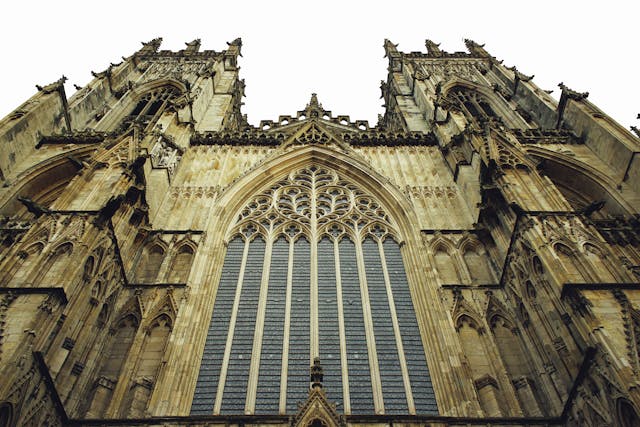York is one of the oldest and most fascinating cities in Britain. Its cobbled streets and ancient walls hold stories that stretch back almost two thousand years. People often visit York for its cathedral, museums, and quaint tea rooms, but its past hides many unexpected and unusual tales. Here are ten amazing facts about York’s history that show just how strange and surprising this city has been.
1. York Was Once the Capital of a Roman Empire
Long before London became the centre of power, York held the title of an imperial capital. In 306 AD, the Roman Emperor Constantine the Great was proclaimed emperor right here in the city. At that time, York was called Eboracum and was one of the most important Roman settlements in Britain. The ruins of the Roman fortress still lie beneath modern buildings, and visitors can see parts of the old Roman walls and columns near the Minster.
2. Vikings Called It Jorvik and Made It a Trading Power
In the ninth century, the Vikings invaded and renamed the city Jorvik. Under Viking rule, York became a lively trading centre connected to Europe and the Middle East. Archaeologists have found evidence of workshops, shoes, combs, jewellery, and even imported spices. The Jorvik Viking Centre lets visitors walk through a reconstructed Viking street and smell what the city might have been like back then. It was noisy, crowded, and full of life.
3. Medieval York Had Legalised Gambling and Dice Games
By the Middle Ages, York had become a bustling market town full of taverns and inns. Gambling was so common that city records show strict rules on dice games and wagers. People bet on everything from horse races to cockfights. Today, you won’t see much gambling in the old inns, but many locals enjoy online games instead. It’s easy to find a list of casinos without GamStop if you are curious about how people continue this old habit digitally. The tradition of taking risks, it seems, has stayed part of York’s character.
4. York Once Smelled Terrible Because of Its Tanneries
Walk along the River Foss or Ouse today and you’ll see calm water and tidy paths. But centuries ago, these rivers were lined with tanneries that processed animal hides. The work produced an awful smell that hung over the city. Workers used a mix of water, lime, and animal waste to soften the hides, making the area almost unbearable. Still, leather from York was known for its quality, and the trade brought money and jobs.
5. Heads Were Displayed on the City Gates
York has some of the best-preserved medieval gates in Britain, known as bars. In the Middle Ages, the heads of executed traitors were placed on spikes above these gates to warn others. One of the most famous was that of the rebel Henry Hotspur, whose head was displayed on Micklegate Bar in 1403. Today, the bars are peaceful tourist spots, but centuries ago they were grim reminders of royal power.
6. The Minster Took More Than 250 Years to Finish
York Minster is one of the largest cathedrals in Northern Europe, and its construction stretched over two and a half centuries. Building began in 1220 and was finally completed around 1472. Generations of workers contributed to its towers, windows, and carvings. Inside, you can still see marks left by medieval masons and stonecutters. Imagine spending your whole life building something you’d never live to see completed.
7. A Ghostly Army Is Said to March Beneath the City
York is often called one of the most haunted cities in Britain, and one of the most famous ghost stories involves Roman soldiers. In the 1950s, a plumber working in the Treasurer’s House claimed he saw a line of Roman soldiers walking through the cellar floor. He described them as cut off at the knees, as if walking on a lower Roman road buried under the building. Many locals still believe the story, and ghost tours often include this eerie tale.
8. The Shambles Inspired Diagon Alley
The Shambles, York’s most famous street, looks like something straight out of a fairy tale. Its narrow, uneven buildings lean toward each other across the cobblestone path. Centuries ago, it was a street full of butcher shops, and hooks for hanging meat can still be seen on some buildings. Its crooked charm reportedly inspired the design of Diagon Alley in the Harry Potter films. Today, it’s filled with souvenir shops, sweet stores, and small cafés.
9. Guy Fawkes Was Born Here
One of Britain’s most infamous figures, Guy Fawkes, was born in York in 1570. He became part of the Gunpowder Plot, a failed attempt to blow up Parliament in 1605. His house still stands near the Minster, marked by a plaque. Every year on 5 November, people across the UK celebrate Bonfire Night to remember his capture. Few cities can claim a connection to such a famous piece of British history.
10. York Was Almost Destroyed by Floods Many Times
The River Ouse has flooded the city many times through the centuries. Records show major floods in the 13th century, and more recently in 2015. Before modern flood barriers were built, water often reached into the streets near the bridge. Locals grew used to it, building houses with raised doors and steps. Even today, when heavy rain hits, residents still keep a close eye on the river levels.
York’s Past Still Shapes Its Present
What makes York remarkable is how much of its past remains visible. The Roman walls outline the city’s old boundaries. The Viking street names still appear on signs. Medieval churches sit beside cafés and bookshops. Every era has left a mark. Walking through York feels like stepping through layers of time, each one filled with its own strange and surprising stories.
You can easily spend days uncovering these details. The layers of Roman, Viking, and medieval life are hidden beneath ordinary streets. Archaeologists say York is one of the most studied cities in Europe because so much has survived underground. That’s why construction work in the city often takes longer than expected—builders frequently find artefacts buried below.
The City of Many Names and Faces
Few cities in Britain have changed identities as often as York. It began as the Roman Eboracum, became Viking Jorvik, and later medieval Yorke. Each period added something new. The Romans brought stone walls and roads. The Vikings turned it into a trading centre. The Normans built castles and churches. Even today, the mix of cultures and styles gives York a special atmosphere that feels both ancient and alive.
York has always been a place of movement and trade. Its rivers connected it to the sea, and merchants came here from distant lands. Coins from across Europe have been found in the city, proving how global its connections once were. Many historians believe this constant contact helped shape York’s open and curious spirit.
Why York’s History Still Surprises Visitors
What surprises most visitors is not just how old York is, but how strange some of its traditions were. Public punishments, head displays, ghost stories, and Viking markets sound like something from fiction, yet they all happened here. Even its darker chapters, such as the floods or the stinking tanneries, show how people adapted to survive and build again.
For a city so ancient, York has kept an impressive sense of continuity. The old streets are still alive with stories. If you walk along the Shambles at night or cross the city walls at sunset, you can almost imagine the echoes of its past—the Roman soldiers, Viking traders, medieval builders, and storytellers who once walked there.
York’s history is not just something written in books. It lives in the stone walls, the uneven streets, and the names of its lanes. Each corner hides a memory waiting to be found. Whether you’re a visitor or a local, there’s always something new and surprising to discover about this city’s remarkable past.





